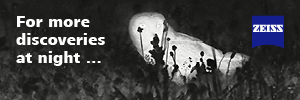Fred Ruhe
Well-known member

Julian P. Hume, Ian Hutton, Greg Middleton, Jacqueline M.T. Nguyen, John Wylie, 2021
A Terrestrial Vertebrate Palaeontological Reconnaissance of Lord Howe Island, Australia
Pacific Science 75(1): 1–31 Project MUSE - A Terrestrial Vertebrate Palaeontological Reconnaissance of Lord Howe Island, Australia
Abstract:
Lord Howe Island, situated 790 km northeast of Sydney in the Tasman Sea, was first encountered in February 1788, and one of the last islands discovered by humans. Apparently, Polynesians were unaware of the island. At the time of discovery, seabirds dominated the island, with a terrestrial avifauna comprising five endemic species and eight subspecies. The island was initially a whaling refurbishment station until establishment of a settlement in 1834, which resulted in the extinction of three endemic birds due to over-hunting. The accidental invasion of black rats in 1918 resulted in another wave of extinctions, with the loss of five passerines, followed by an endemic owl c. 1940. Museum skins represent all but one of these species, but almost no skeletal remains exist. Here, we present the results of a palaeontological survey that explored subfossil depositaries on Lord Howe Island, including analysis of hitherto unstudied Lord Howe bird subfossil collections held in Australian museums. Our discoveries include the first known skeletal elements of six extinct species, five recorded in context, and a particularly fossil-rich sand dune site on Lord Howe Island that contained hundreds of terrestrial bird subfossils.
Enjoy,
Fred
A Terrestrial Vertebrate Palaeontological Reconnaissance of Lord Howe Island, Australia
Pacific Science 75(1): 1–31 Project MUSE - A Terrestrial Vertebrate Palaeontological Reconnaissance of Lord Howe Island, Australia
Abstract:
Lord Howe Island, situated 790 km northeast of Sydney in the Tasman Sea, was first encountered in February 1788, and one of the last islands discovered by humans. Apparently, Polynesians were unaware of the island. At the time of discovery, seabirds dominated the island, with a terrestrial avifauna comprising five endemic species and eight subspecies. The island was initially a whaling refurbishment station until establishment of a settlement in 1834, which resulted in the extinction of three endemic birds due to over-hunting. The accidental invasion of black rats in 1918 resulted in another wave of extinctions, with the loss of five passerines, followed by an endemic owl c. 1940. Museum skins represent all but one of these species, but almost no skeletal remains exist. Here, we present the results of a palaeontological survey that explored subfossil depositaries on Lord Howe Island, including analysis of hitherto unstudied Lord Howe bird subfossil collections held in Australian museums. Our discoveries include the first known skeletal elements of six extinct species, five recorded in context, and a particularly fossil-rich sand dune site on Lord Howe Island that contained hundreds of terrestrial bird subfossils.
Enjoy,
Fred



